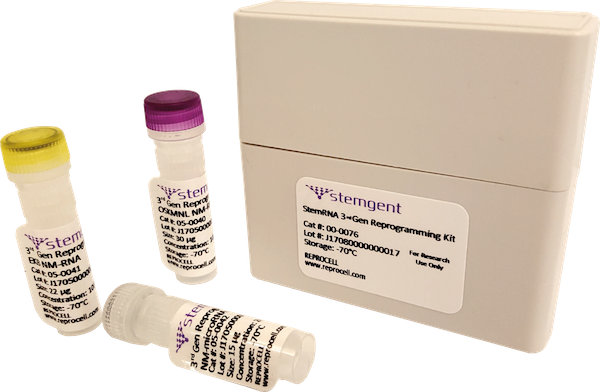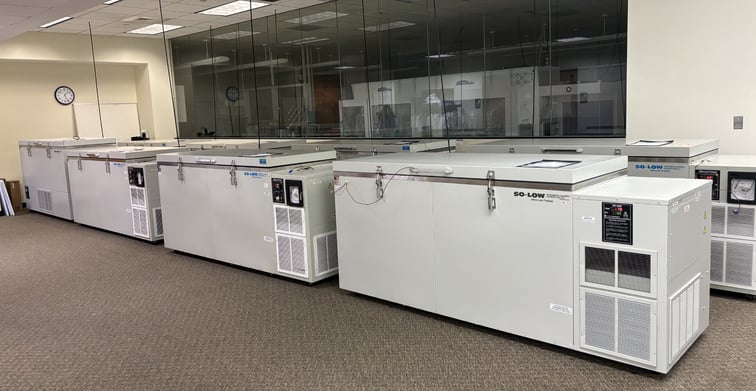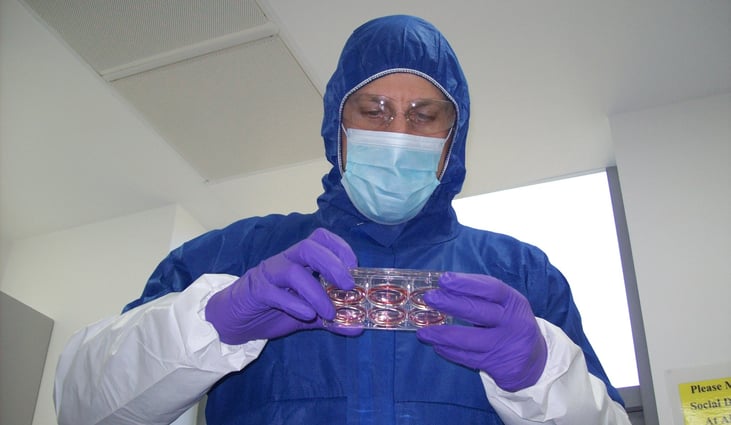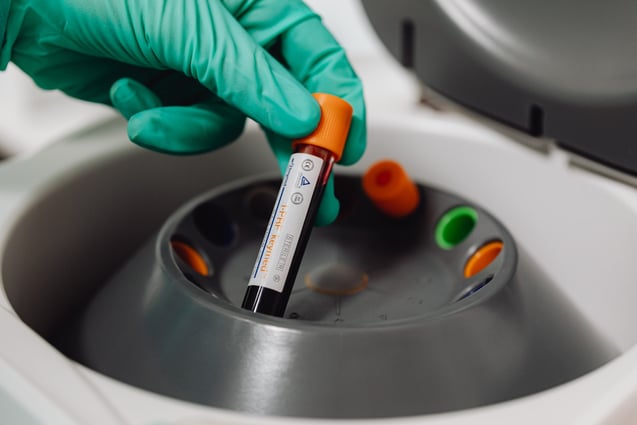Engineered Pigmented Skin Equivalents Reveal UV Protection Mechanisms

Skin, our body's frontline defence, faces constant challenges from the environment. UV radiation, pollution, and other stressors pose threats to its integrity and function. Understanding these challenges has been a longstanding goal for researchers, but traditional methods often fall short in capturing the full complexity of skin biology.
A new approach to tissue engineering is changing the game. REPROCELL and researchers within Professor Stefan Przyborski’s team at Durham University used Alvetex® scaffolds to engineer human pigmented skin in the lab, with remarkable fidelity. The platform, REPROSKIN, is built on meticulous cell culture techniques and advanced technology and offers a closer look at how our skin responds to various stressors, particularly UV radiation.
By using human primary dermal fibroblasts, epidermal keratinocytes, and melanocytes, the team constructed a robust skin equivalent that mirrors the structure and function of native skin. Crucially, this model also included pigmentation generated by the primary melanocytes, with melanin overlying nuclei in a similar orientation to real skin, which is essential for shielding against UV damage.
The platform's strength lies in its ability to deliver precise doses of UV radiation, using a Bio-Sun UV irradiator to deliver controlled doses of UV-A or UV-B, while closely monitoring skin responses. This allows researchers to study early UV exposure effects with accuracy, from morphological changes to DNA damage and inflammation.

Beyond its utility in studying UV effects, the platform also provides insights into skin health at a molecular level. By analyzing protein secretion related to inflammation and extracellular matrix remodeling, researchers uncover potential targets for therapeutic intervention.
Moreover, this approach bridges the gap between lab studies and real-life scenarios. Comparing responses in the skin equivalent to those in human fresh skin samples, which is routinely done at REPROCELL’s laboratories, validates such findings and ensures their relevance.
In the paper, published in Frontiers in Medicine in April 2024, researchers from REPROCELL and Durham University delved into the repercussions of UV radiation on living skin equivalents, specifically examining melanin's role in shielding against damage. The findings revealed that pigmented skin equivalents exhibited a lesser degree of UV-induced damage compared to their non-pigmented counterparts, indicating the protective influence of melanin on epidermal structure and reflecting the biology of real human skin.
Following UV exposure, pigmented equivalents displayed heightened melanin synthesis and distribution, alongside increased melanocyte proliferation, mirroring responses observed in human skin. Notably, apoptosis increased in non-pigmented equivalents post-UV exposure, while melanin-rich counterparts showed no significant change, reaffirming melanin's role in photoprotection. Additionally, DNA damage was less severe in pigmented equivalents, suggesting melanin's involvement in DNA protection mechanisms.
Moreover, while epidermal proliferation decreased after UV exposure in non-pigmented equivalents, it remained unchanged in pigmented ones, hinting at melanocytes' potential influence on proliferation rates.
Inflammatory markers increased post-UV exposure in both pigmented and non-pigmented skin equivalents, with higher levels of inflammation in non-pigmented counterparts. This disparity also underscores melanin's capacity to mitigate inflammation. Furthermore, UV exposure prompted ECM remodeling, with increased MMP secretion observed during and after exposure. Notably, pigmented equivalents exhibited higher MMP-9 and TIMP-2 secretion, reflecting melanin's impact on ECM remodeling processes.
These findings underscored the pivotal role of melanin in shielding skin against UV-induced damage and provided valuable insights into its mechanisms of action. The use of complex, three-dimensional engineered skin holds great promise for informing strategies aimed at skin protection and disease prevention.
We invite you to join our upcoming webinar featuring Professor Stefan Przyborski from Durham University, where you can dive deep into our cutting-edge 3D services. Register now to secure your spot on July 9th. We offer convenient sessions at 12:00 BST, 17:00 BST, and 12:00 EST for our American audience. Don’t miss this opportunity to learn from the best in the industry!
Author
Ella Cutter
Ella is REPROCELL Europe's Digital Marketing Manager. Hailing from an American background in journalism and publishing, she likes to read, run and try new restaurants in her free time. Connect with her on LinkedIn: www.linkedin.com/in/ellacutter.
Subscribe to receive updates from REPROCELL
Tagged
Stem cell and drug discovery scientists around the world are using our services and products in their preclinical and clinical research.
Subjects we write about
- 3D Cell Culture
- Cell Culture
- Central Lab Services
- Clinical Capabilities
- Disease Modeling
- Drug Discovery
- Gene Editing
- Genomic services
- GMP
- Human Tissue Samples
- Human Tissue Testing
- IBD
- Life Sciences
- Neurons
- Oligonucleotide Synthesis
- Precision Medicine
- Regenerative Medicine
- Respiratory Disease
- Skin Disease
- Stem Cells










